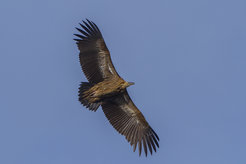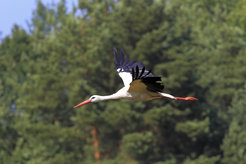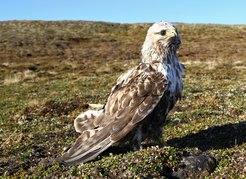Daylength is an ultimate factor driving migration
Birds travelling to higher latitudes benefit from longer stretches of daytime activity
A study tracking vastly diverse species over several years has found that day length is one of the essential factors determining migration in birds. Published in the Journal of Animal Ecology, the study is the first to highlight that daylight availability could be an ultimate cause of the global phenomenon bird migration that involves billions of birds annually.

“Migration patterns have changed during evolution, but they are changing faster recently due to human influence in the Anthropocene,” says Ivan Pokrovsky, postdoctoral researcher in the Max Planck Institute of Animal Behavior and first author on the study. “Understanding that daylength is a primary, unifying concept will help scientists and conservationists predict future changes of migration caused by human activities.”
Animals migrate to improve their living conditions. Factors like avoiding predators or finding food and suitable breeding grounds are known to influence animals’ decisions regarding when and where they migrate.
Billions of birds migrate annually, and nearly all travel along a latitudinal gradient towards a pole, which means that they gain daylight hours during summer. But whether migrants benefit from these longer days—by scoring more time to feed, for example—has been unclear and difficult to analyse across time, space, and species.
By studying the behavior of four vastly different species of long‐distance migratory birds, the researchers sought to answer whether migrants benefit from longer days by increasing their daytime activities. The team of scientists, which included Pokrovsky, Wolfgang Fiedler and Martin Wikelski, was led by senior author Andrea Flack.

The four species studied—rough-legged buzzards, white storks, greater white-fronted geese, and Himalayan vultures—differ in their foraging behaviour. Geese and storks are ground foragers while vultures and buzzards search for food in flight. At the same time, these species experience different amplitudes of the annual daylight changes, as two species (buzzards and geese) migrate to the Arctic while the other two (storks and vultures) stay at middle latitudes.

GPS loggers and accelerometers attached to 63 individuals delivered information about the birds’ location and movement activity every 10 minutes. This advanced tracking technology allowed the researchers to compare the behavior of migrating birds that experiences various daylight regimes throughout their life cycles.
The results showed that birds did make use of longer days when migrating from wintering to breeding grounds: all four species were active for longer periods during days with more daylight hours.
Closer inspection of this revealed two distinct patterns of daily activity. Flying foragers—buzzards and vultures—showed increasing activity patterns, whereby activity changed uniformly together with the sun's movement. In contrast, the ground foragers—storks and geese—showed a constant activity pattern, whereby they immediately increased their activity to a certain level and maintained this level throughout the day.
The study confirmed that migration to regions with longer days is beneficial for birds with highly contrasting life histories. Long days enable higher activity levels, allowing birds to achieve this activity with lower energy expenditure rates.
“This has important implications when exploring animal decision-making,” says Pokrovsky. “Even in a rapidly changing world, daylength will remain stable.” The finding takes on added relevance for vulnerable ecosystems, such as the Arctic, where the role of day length is high and rapid warming is already affecting terrestrial tundra ecosystems.














